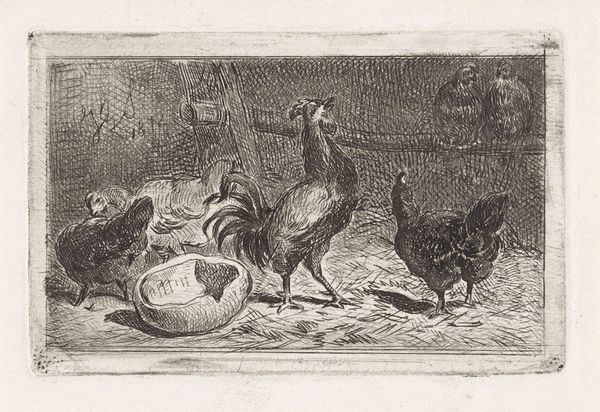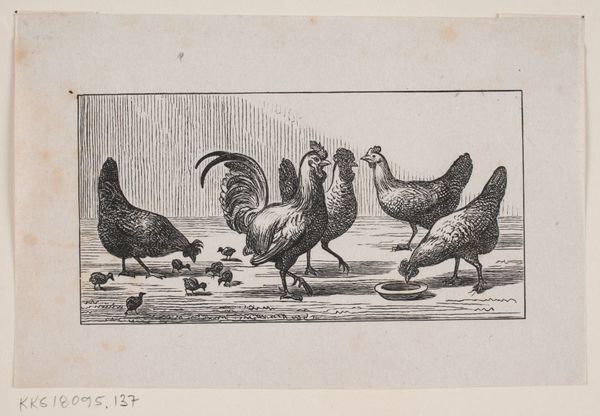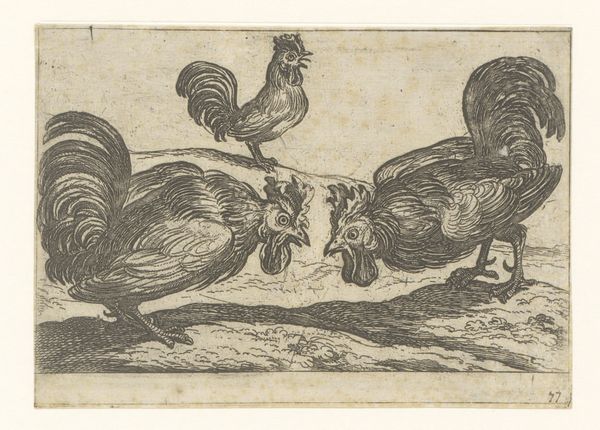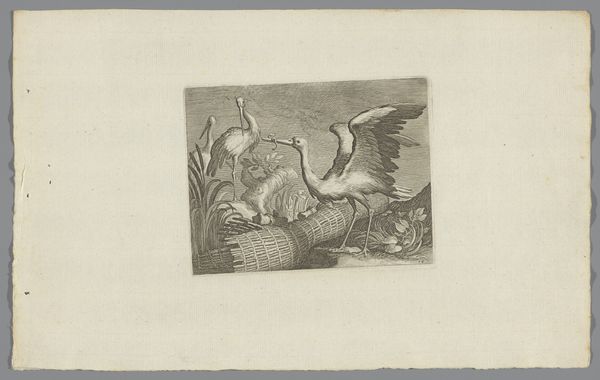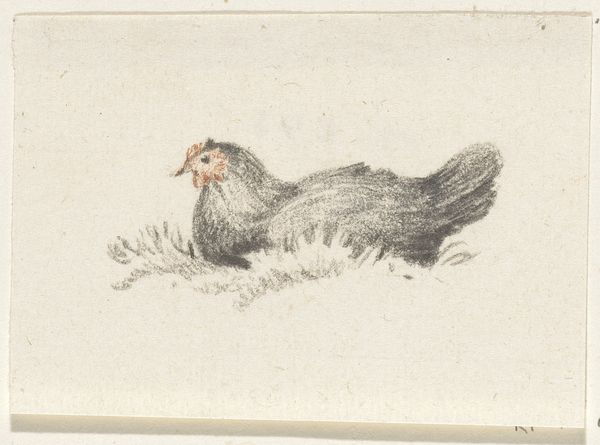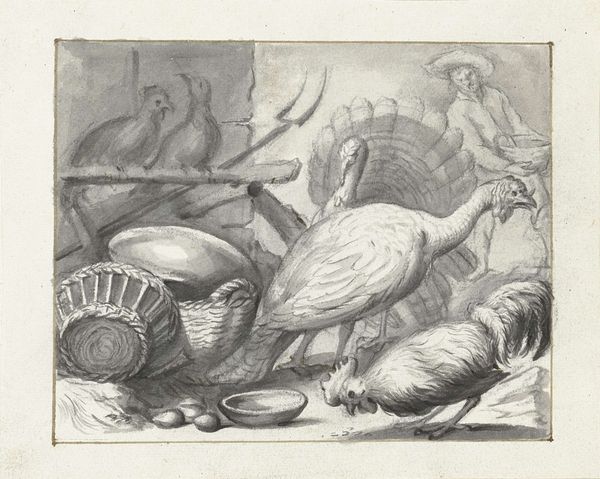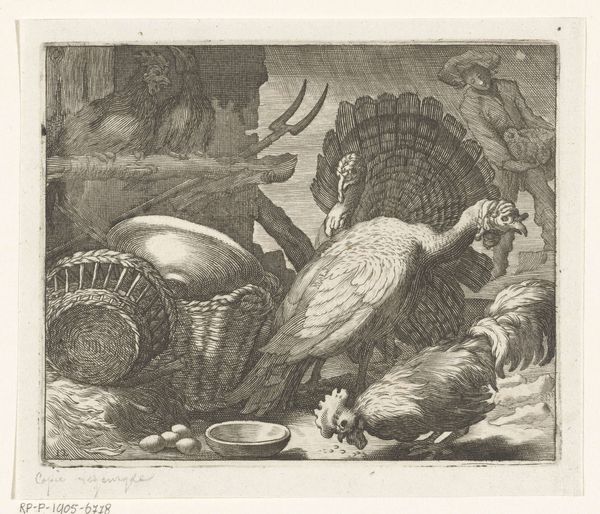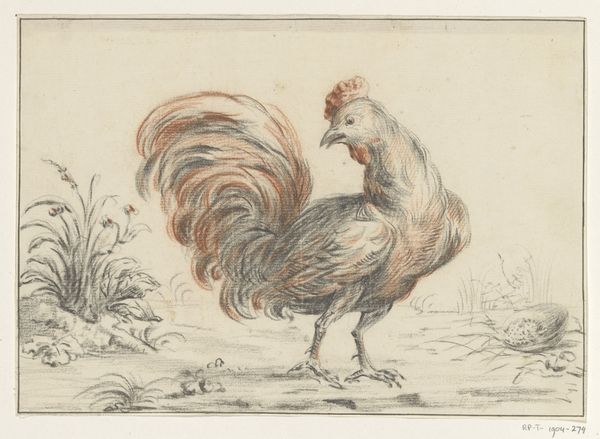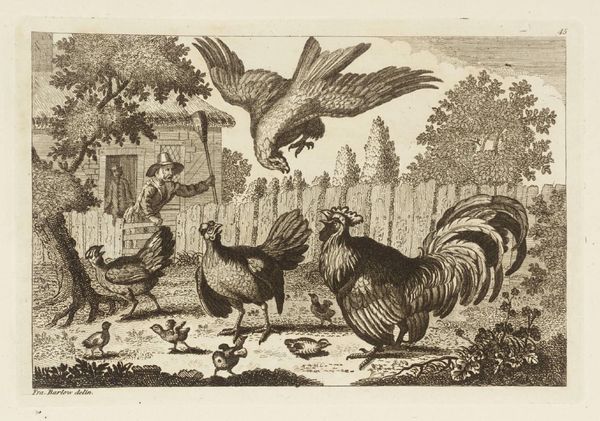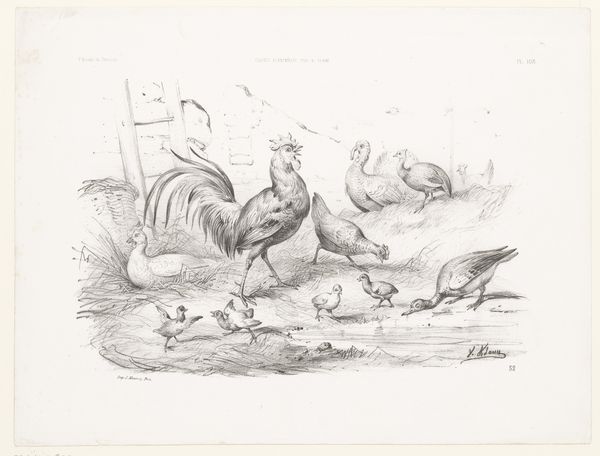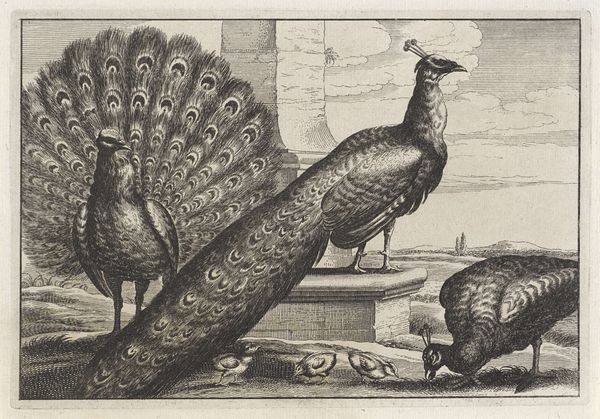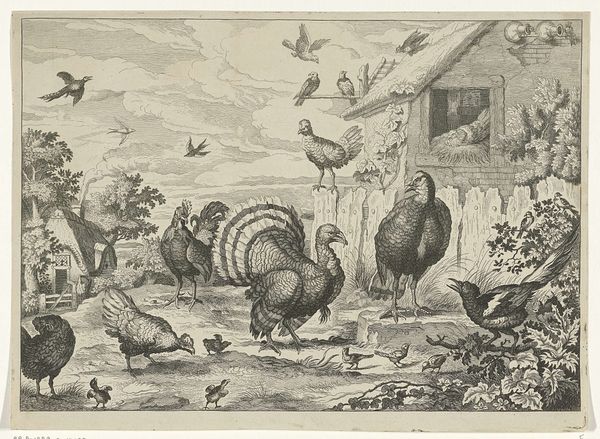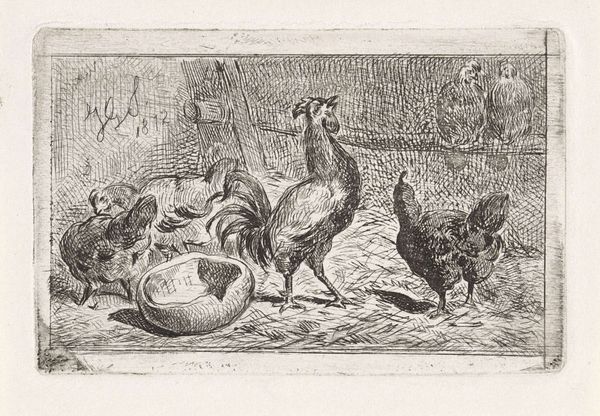
print, etching, engraving
#
animal
# print
#
etching
#
engraving
Dimensions: height 55 mm, width 80 mm
Copyright: Rijks Museum: Open Domain
Johann Friedrich Gottlieb Unger made this engraving of a turkey and two rabbits sometime before 1804. Engraving is an intaglio process; the artist cuts lines into a metal plate, applies ink, and then presses paper against the plate with great force. Look closely, and you'll notice a rich range of line weights and densities. Unger would have used a tool called a burin to achieve this effect. The turkey’s plumage displays the variety of textures and tones, while the rabbits are defined by tight, curved strokes. In the background, a wall of vertical lines creates a strong contrast with the animals in the foreground. Engravings like this one were made in multiples, and circulated widely, spreading visual information to a broad audience. The labor of the engraver often goes unremarked, but each line represents a decision, an action, and a commitment of time. Appreciating these factors helps us to understand the cultural value placed on craftsmanship, even in a world increasingly shaped by mass production.
Comments
No comments
Be the first to comment and join the conversation on the ultimate creative platform.
